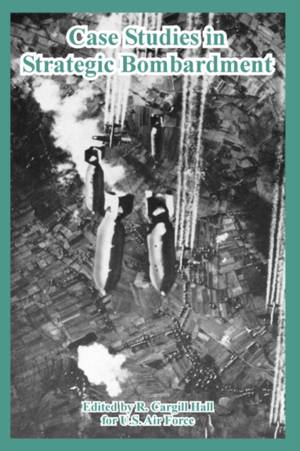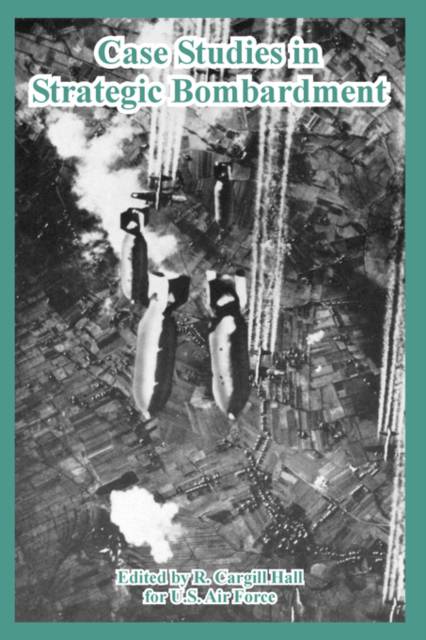
- Retrait gratuit dans votre magasin Club
- 7.000.000 titres dans notre catalogue
- Payer en toute sécurité
- Toujours un magasin près de chez vous
- Retrait gratuit dans votre magasin Club
- 7.000.0000 titres dans notre catalogue
- Payer en toute sécurité
- Toujours un magasin près de chez vous
Description
This volume, the third in a series of historical case studies of important air power missions, addresses the most controversial (and arguably most significant) air power mission of all--strategic bombardment. The ability of aircraft and missiles to destroy or disrupt an enemy's war-making potential and to break or weaken his will to resist, independent of the actions of ground and naval forces, has served as the central theme of air power theory and as the rallying point of air advocates, who made it the raison d'Ltre for independent air forces. Written by well-known military historians, each chapter stands alone as a case study of an important stage in strategic air operations; combined, the chapters provide a comprehensive and insightful analysis of the theory and practice of strategic bombardment from its inception in World War I through the Gulf War of 1991. From "Boom" Trenchard and "Billy" Mitchell to John Warden and Charles Horner, the vision of air power prophets and airmen is tested against the reality of bureaucratic inertia, aircraft capability, technological advances, and bombing accuracy. Seldom in the twentieth century has technology fully met the demands of air power theory. Yet in each era a practitioner of the art appears, such as Harris, Spaatz, LeMay, or Horner, who in some measure modifies prevailing doctrine and stretches the paradigm of his time and circumstances to achieve extraordinary results. Technology, of course, is the prime determinant of doctrine and operations. This exceptional volume surveys the entire history of strategic bombardment and its technology, from the Zeppelin and Gotha of the Great War to the F-117 and the penetrating precision guided bomb of the Gulf War. The reader will find technological advances--such as radar bombing and range-extending air-to-air refueling--that answer one problem only to produce new requirements and expectations that demand more advanced technology. Guided munitions, while offering remarkable precision, have underscored the problems of strategic intelligence collection and dissemination, and of locating and attacking both fixed and mobile targets. This volume also examines the changes in the public's perception of strategic bombardment. The exaggerated fears of a "knockout blow" and near total destruction bruited about before World War II gradually were replaced by a general acceptance of area bombing and contemporary satisfaction at the casualties inflicted on the foe during the war itself. That public tolerance evaporated soon after the appearance of the atom bomb. The ever-present threat of a civilization-ending global nuclear war continued for another forty years and made the B-52 bomber and intercontinental ballistic missile both symbols of ultimate destruction and potent tools of nuclear stability. Indeed, public acceptance of combat casualties for both friend and foe has steadily declined in the latter half of the twentieth century. If the World War II bombing of Berlin and Tokyo resonated favorably with public opinion at the time, changing attitudes by the 1990s would never have condoned such an approach to the Gulf conflict. Finally, later chapters in this volume consider some of the most significant missions and accomplishments of the United States Air Force during the Cold War. They examine the actions and events associated with strategic air power that helped repel or deter communist aggression and protect the vital interests of Western democracies throughout the world. The U.S. Air Force's commitment to strategic air power has been consistent and seamless since the days of the B-17 to the era of the B-2. Through the development and elaboration of strategic air warfare capabilities and thought, it has created a modem world in which global air power will be the strategic instrument of choice for power projection and presence in the twenty-first century. Richard P. Hallion The Air Force Historian
Spécifications
Parties prenantes
- Auteur(s) :
- Editeur:
Contenu
- Nombre de pages :
- 684
- Langue:
- Anglais
Caractéristiques
- EAN:
- 9781410224804
- Date de parution :
- 30-06-05
- Format:
- Livre broché
- Format numérique:
- Trade paperback (VS)
- Dimensions :
- 152 mm x 229 mm
- Poids :
- 988 g

Les avis
Nous publions uniquement les avis qui respectent les conditions requises. Consultez nos conditions pour les avis.






